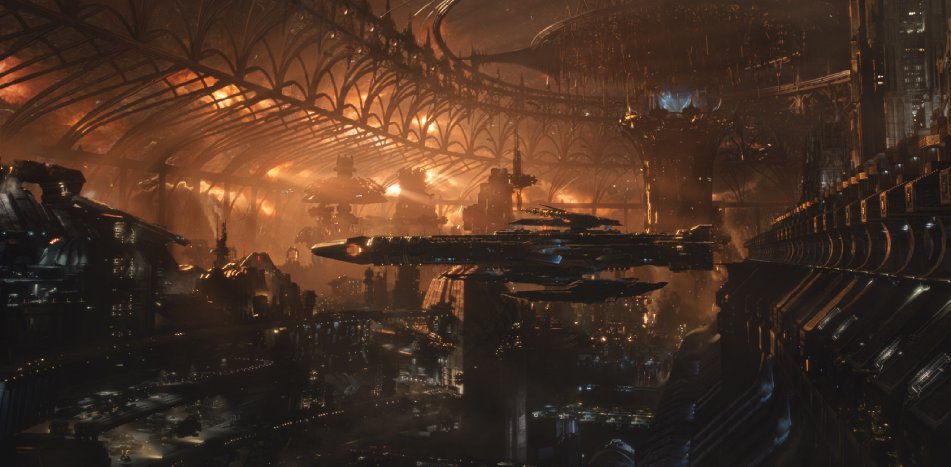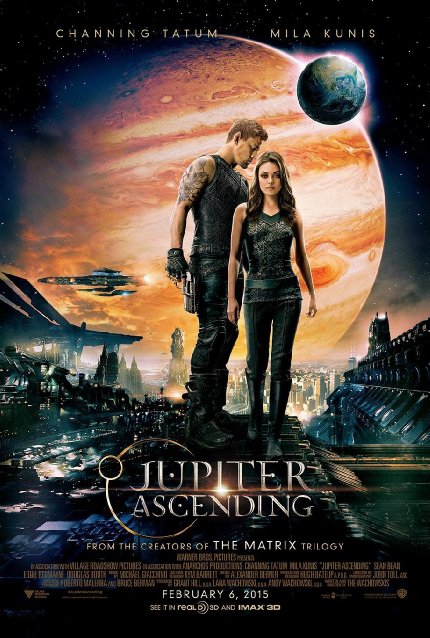4 Fun Ways 'Jupiter Ascending' Shows Off Space Science

The new movie "Jupiter Ascending" takes viewers on a wild ride through the solar system and beyond.
From a strange alien species living in Jupiter's Great Red Spot to a very serious family of royal siblings attempting to take over the universe, "Jupiter Ascending" is a visually stunning, original science-fiction universe. It also happens to have at least a few ideas based on real science embedded deep within the film.
The movie — which opened to dismal box-office numbers in U.S. theaters this past Friday (Feb. 6) — follows Jupiter Jones (Mila Kunis) as she finds out that she is heir to an incredible, galactic fortune. She then has to make her way through the universe with the hunter Caine Wise (Channing Tatum) to protect her inheritance. [10 Space Movies to Watch in 2015]
Here's some fun science that might make "Jupiter Ascending" (written and directed by Lana and Andy Wachowski) even more enjoyable.
Clingy spacesuits
The skintight spacesuits worn during the movie actually aren't as ridiculous as they might appear at first. A group of Massachusetts Institute of Technology researchers are in the process of developing a spacesuit that "shrink wraps" astronauts of the future, and the current mock-ups of the suit look somewhat like the suits worn by Jupiter and Caine in the film.
"With conventional spacesuits, you're essentially in a balloon of gas that's providing you with the necessary one-third of an atmosphere [of pressure] to keep you alive in the vacuum of space," MIT professor Dava Newman said in a statement. "We want to achieve that same pressurization, but through mechanical counterpressure — applying the pressure directly to the skin, thus avoiding the gas pressure altogether."
The spacesuits currently in development could provide more dexterity and general flexibility for astronauts who may be working hard in the vacuum of space. The bulky spacesuits currently used on the International Space Station don't allow for as much movement as these skintight suits might in the future.
Breaking space news, the latest updates on rocket launches, skywatching events and more!
Beautiful Jupiter renderings
The planet Jupiter looks truly stunning in the new movie. Jupiter's clouds swirl and swarm, and the planet's Great Red Spot looms large in many of the shots in the film.
The Great Red Spot is actually a giant storm that has been swirling on Jupiter since at least the 1600s. The spot is actually shrinking now. At one point, the giant tempest was about the size of three Earths, but now, it has shrunk to about the size of one Earth, according to new measurements.
Planets, spaceships and portals
The Wachowskis invent some amazing-looking alien planets for the new movie as well. The universe of "Jupiter Ascending" plays host to overpopulated worlds with space stations surrounding them, as well as beautiful planets with red grass and clear water.
The spaceships in the movie are just as diverse as the planets, with strange future propulsion methods and an odd wormholelike portal that can transport a ship full of people to a new part of the cosmos.
See Jupiter now
If you want to observe Jupiter yourself after seeing the movie, you're in luck. Jupiter reached opposition with the sun — meaning that the gas giant was opposite the sun in Earth's sky — earlier in February, making it easier to observe the planet. The moon and Jupiter also just had a close encounter earlier in the month.
Jupiter's moons are also going through a complex series of transits across the face of the planet, many of which should be able to be seen through backyard telescopes.
"For the next couple of months, backyard skywatchers can see the moons of Jupiter executing a complex series of mutual eclipses and transits," NASA officials said in a statement. "The eclipses have already started. On Jan. 24, for example, three of Jupiter's moons — Io, Europa and Callisto — cast their inky-black shadows on Jupiter's swirling cloud tops."
Follow Miriam Kramer @mirikramer. Follow us @Spacedotcom, Facebook and Google+. Original article on Space.com.

Miriam Kramer joined Space.com as a Staff Writer in December 2012. Since then, she has floated in weightlessness on a zero-gravity flight, felt the pull of 4-Gs in a trainer aircraft and watched rockets soar into space from Florida and Virginia. She also served as Space.com's lead space entertainment reporter, and enjoys all aspects of space news, astronomy and commercial spaceflight. Miriam has also presented space stories during live interviews with Fox News and other TV and radio outlets. She originally hails from Knoxville, Tennessee where she and her family would take trips to dark spots on the outskirts of town to watch meteor showers every year. She loves to travel and one day hopes to see the northern lights in person. Miriam is currently a space reporter with Axios, writing the Axios Space newsletter. You can follow Miriam on Twitter.

